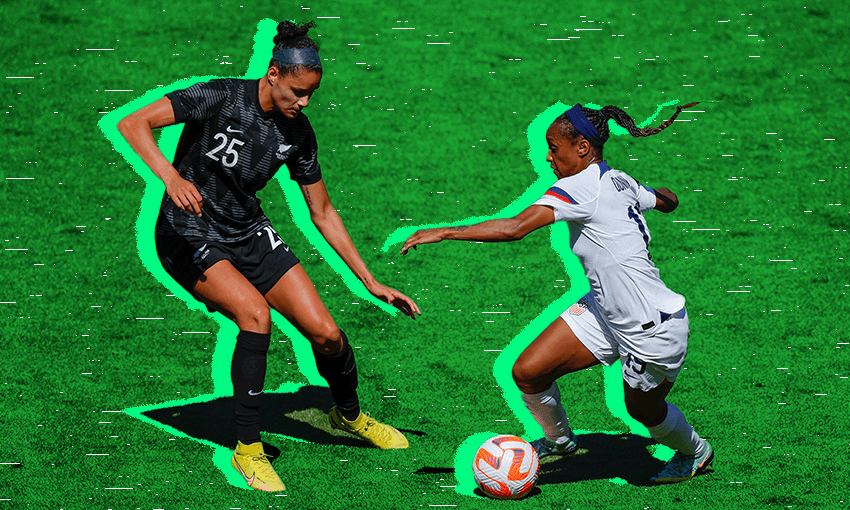Participation has surged in host countries following recent tournaments. With the sport’s biggest showcase yet about to kick off in New Zealand, will the same thing happen here?
The biggest women’s sporting event in the world is coming to Aotearoa in just a few weeks. The 2023 Fifa Women’s World Cup, co-hosted with Australia, promises enormous economic upside for New Zealand, especially for its four host cities. But in the longer term, the biggest win may be the enormous uptake in female football participation that is expected in the wake of the event.
Football numbers are predicted to soar
Previous Fifa World Cups have led to surges in host countries’ football participation. “We’ve seen after each World Cup that the number of people who register in the host country … is immediately multiplied by three,” Fifa secretary-general Fatma Samoura told The Sydney Morning Herald.
The 2019 Fifa Women’s World Cup, hosted in France, elevated women’s and girls’ football participation both in France and across the Channel in the UK. In the months after the England women’s football team reached the 2019 World Cup semi-final, the FA estimated over 850,000 English girls and women took up the sport.
And the 2023 Fifa Women’s World Cup in New Zealand and Australia will be on an even larger scale. It’s set to become the most-attended women’s sporting event in history, with over a million tickets already sold.
Women’s football is about to take centre stage in New Zealand – and it’s going to stick around.
Football is for all women at all levels and ages
The world’s top female players will surely dazzle us with their skills. But you don’t have to be a football superstar to enjoy playing the beautiful game.
Kimberley Kan, visual content producer for Chromazura Productions in Wellington, created documentary series The Journey North to encourage women to get involved in football at the amateur level.
The series follows the North Wellington FC premier women’s team across the 2022 season. Each episode begins with a player interview then focuses on a match in their season to deliver insights into the experience of playing amateur women’s football in New Zealand.
“We wanted to share their stories in the hope that someone out there watches it and can relate and feels inclined to start playing football,” Kan says. Although the series was designed to appeal to an audience of girls and women of all ages, Kan had a special focus on women who had missed out on the opportunity to play as girls.
“Especially with the generations of women that weren’t introduced to football at school because they were told netball was their only option, or only boys play football.”
“It’s a beautiful social thing playing women’s football. You meet people that you wouldn’t generally meet. You make these connections with people much older and younger than you,” Kan says.
Kan started football as a beginner in her 20s after seeing a signboard calling for female football players. “I joined a team that made football so fun and so welcoming. It was full of people who hadn’t played for ages or hadn’t played full stop.”
How to get involved in football
If you want to dust off your old football boots or try kicking a football for the first time, the best way to get involved is to contact a nearby football club. You can be sure they’ll be ready to welcome footballers of all ages and abilities inspired by World Cup fever.
Southern South Island: Southern Football Club Directory
Canterbury and the Northern South Island: Mainland Football Club Directory
Wellington region: Capital Football Club Directory
Central North Island: Central Football Club Directory
Waikato and Bay of Plenty: Wai-BOP Football Club Directory
Northland, Auckland, and Counties: Northern Region Football Club Directory




